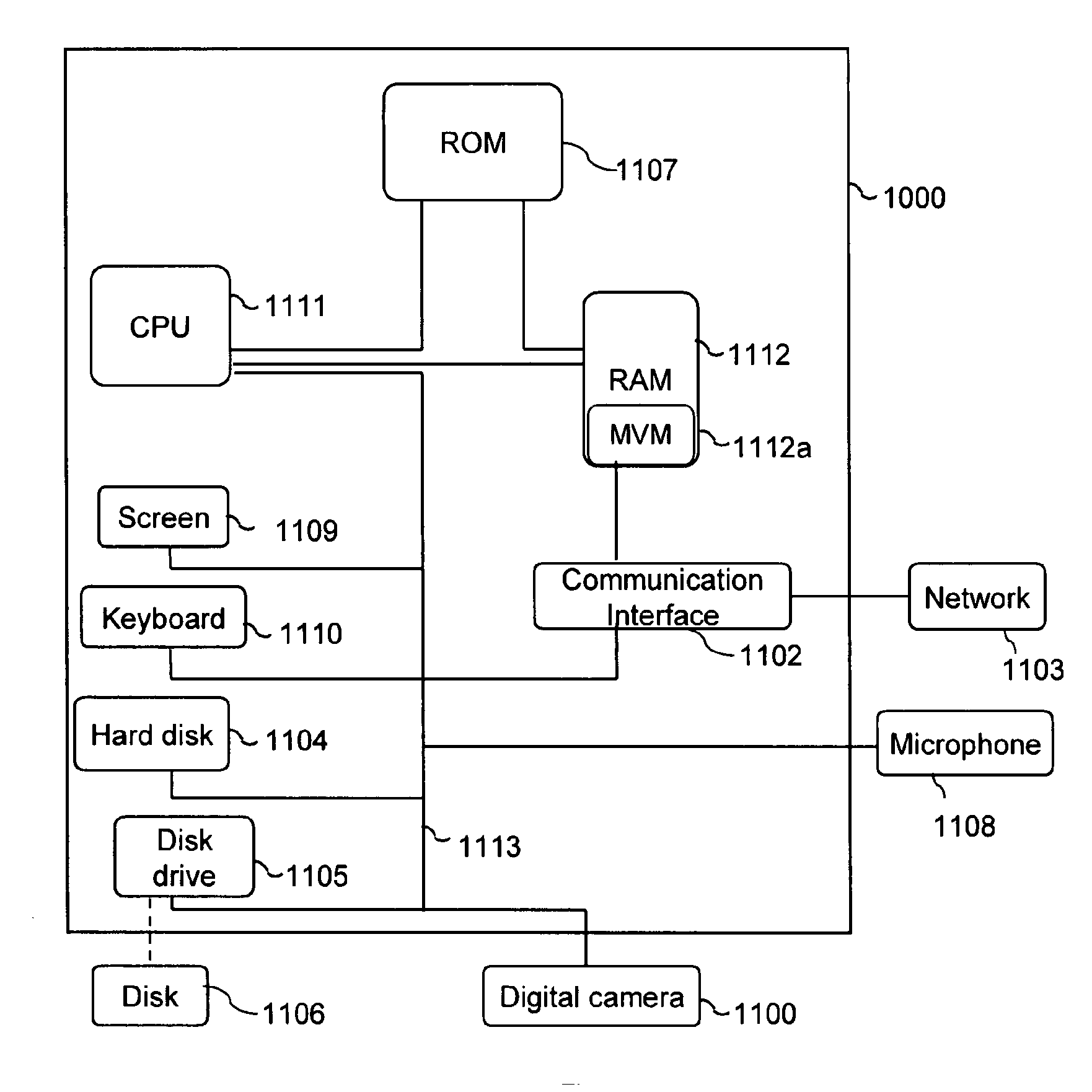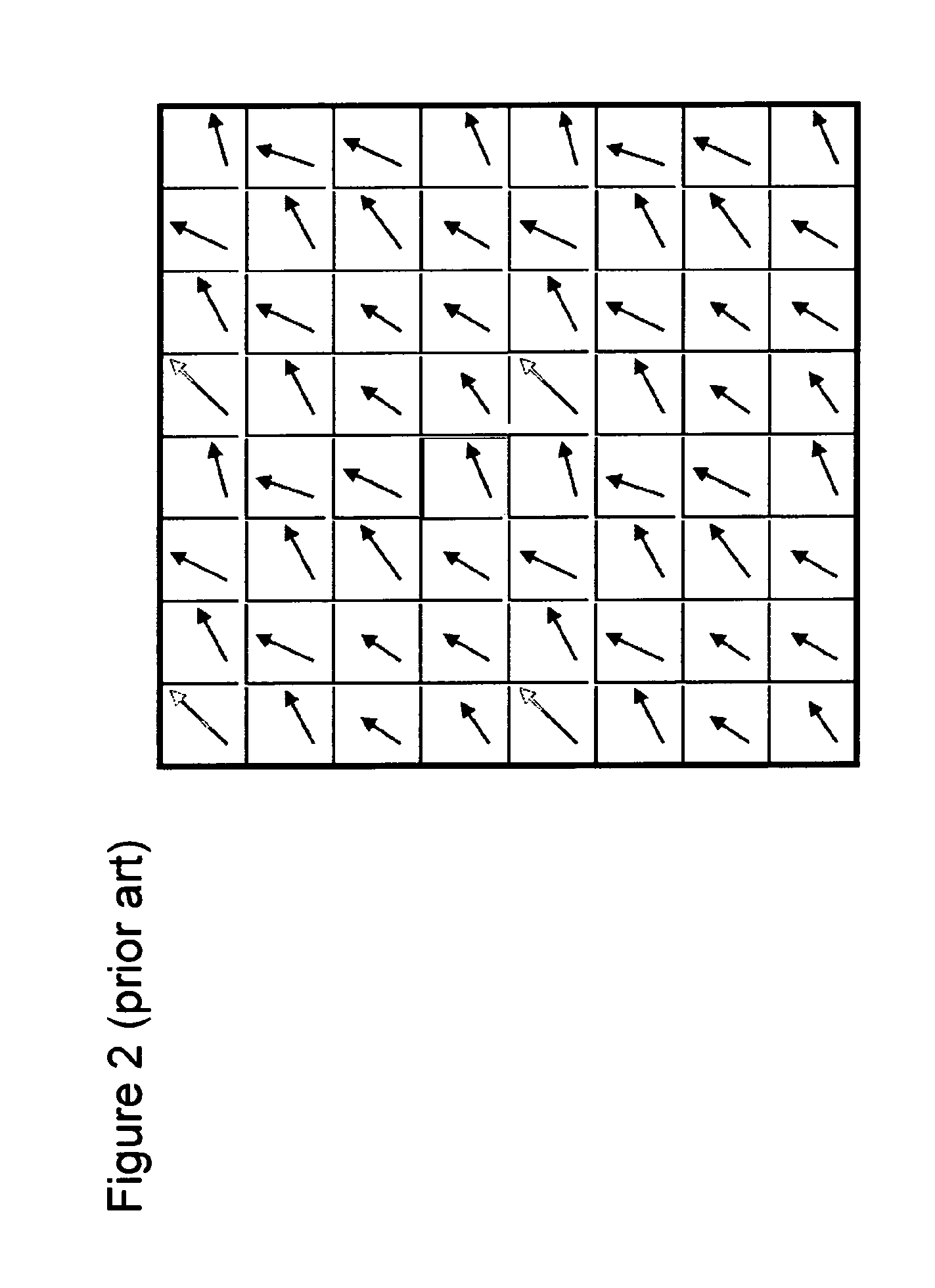Video encoding and decoding
a video and coding technology, applied in the field of digital signal processing, can solve the problems of reducing the coding efficiency, the solution does not consider the diversity of the predictors in the set, and the reduction so as to increase the compression ratio, reduce the loss, and increase the coding efficiency of the motion vector memory compression
- Summary
- Abstract
- Description
- Claims
- Application Information
AI Technical Summary
Benefits of technology
Problems solved by technology
Method used
Image
Examples
first embodiment
[0155]A first embodiment of the present invention will now be described.
[0156]In the first embodiment, as in the proposals JCTVC-C257 and JCTVC-D072 mentioned in the introduction and shown in FIG. 1, one block position is used for the block summarization of a set of N×N motion vectors. The motion vector of the block corresponding to this one block position is stored as a representative motion vector for the entire N×N set. These prior proposals use exclusively the top left block position, as shown in FIG. 1. However, this way of summarization fails to take into account that the collocated motion vector predictor is used in a competitive scheme with other spatial predictors. As a result, although these prior proposals offer a significant reduction in the motion vector memory requirement (e.g. a factor of 16 reduction in the example of FIG. 1), they involve a penalty in terms of coding efficiency. For example, it is estimated that the use of 16 times reduction in the memory requiremen...
second embodiment
[0169]In the first embodiment no account is taken of the likelihood of selection of the spatial predictors at the different positions TP1-TP6 and LP1 to LP5. However, in the AMVP process, the search for the top predictor starts from the right-most position and moves to the left-most position, as already described with reference to FIG. 8. Thus, it is expected that the predictor at position TP6 will be selected more frequently than the predictor at position TP5, and so on from right to left in FIG. 12. The same is true for the left predictor, for which the search starts at the bottom position and moves upwards to the top position. Taking account of the relative frequencies of selection it may be preferable to adjust the average position for the top predictor to the right and the average position for the left predictor downwards. The average position for each predictor could be calculated as a weighted average of the potential positions, with the weights reflecting the relative select...
third embodiment
[0170]In the first and second embodiments described above, the encoder uses two spatial predictors (the top and left predictors). In the third embodiment, the encoder uses only one spatial predictor in the spatial predictors set. For example, if only the left predictor is used, the distance matrix of the left predictor given in FIG. 13A is used to find the best position. In that case, the position selected is block position number 6, the top right block. If only the top predictor is used, two block positions have the maximum value (block position number 11 and block position number 16). In that case, if AMVP is used as described with reference to FIG. 8, theoretically the predictors from the right side are more selected than the predictors from the left side (as explained, the predictors are selected from E to A in the HEVC derivation process). So, the algorithm can consider the use of the block numbered 11, because it should be the farthest block.
PUM
 Login to View More
Login to View More Abstract
Description
Claims
Application Information
 Login to View More
Login to View More - R&D
- Intellectual Property
- Life Sciences
- Materials
- Tech Scout
- Unparalleled Data Quality
- Higher Quality Content
- 60% Fewer Hallucinations
Browse by: Latest US Patents, China's latest patents, Technical Efficacy Thesaurus, Application Domain, Technology Topic, Popular Technical Reports.
© 2025 PatSnap. All rights reserved.Legal|Privacy policy|Modern Slavery Act Transparency Statement|Sitemap|About US| Contact US: help@patsnap.com



